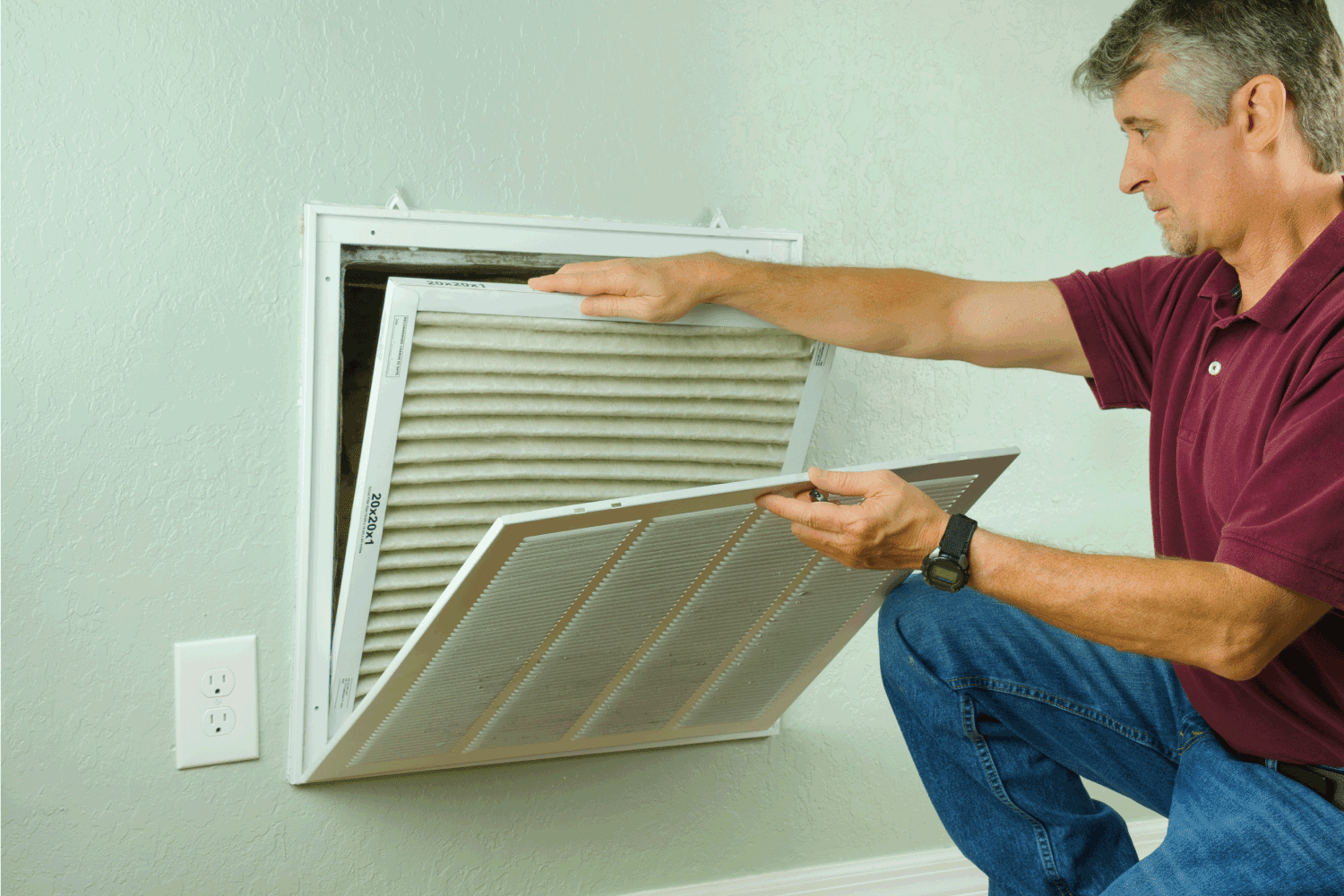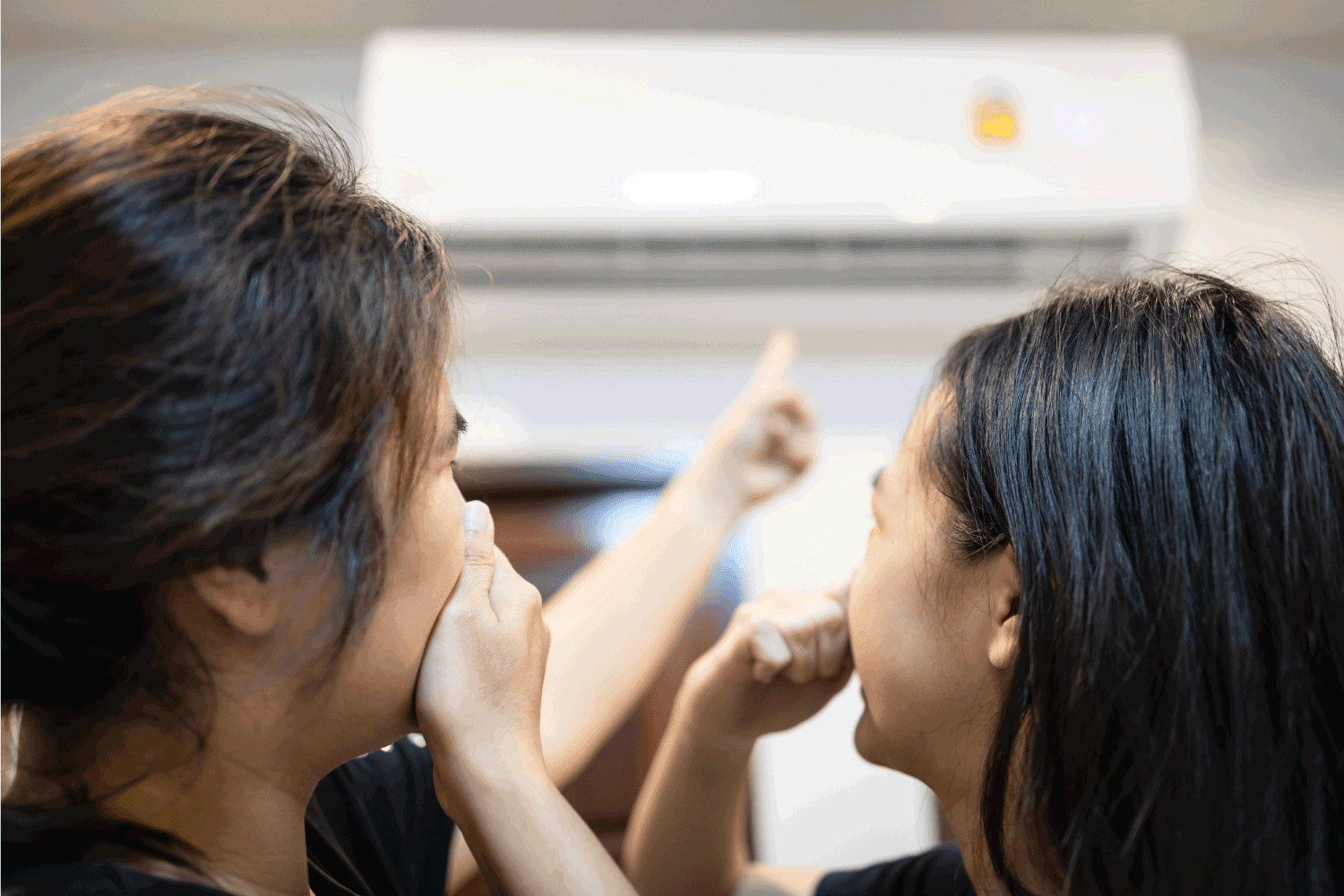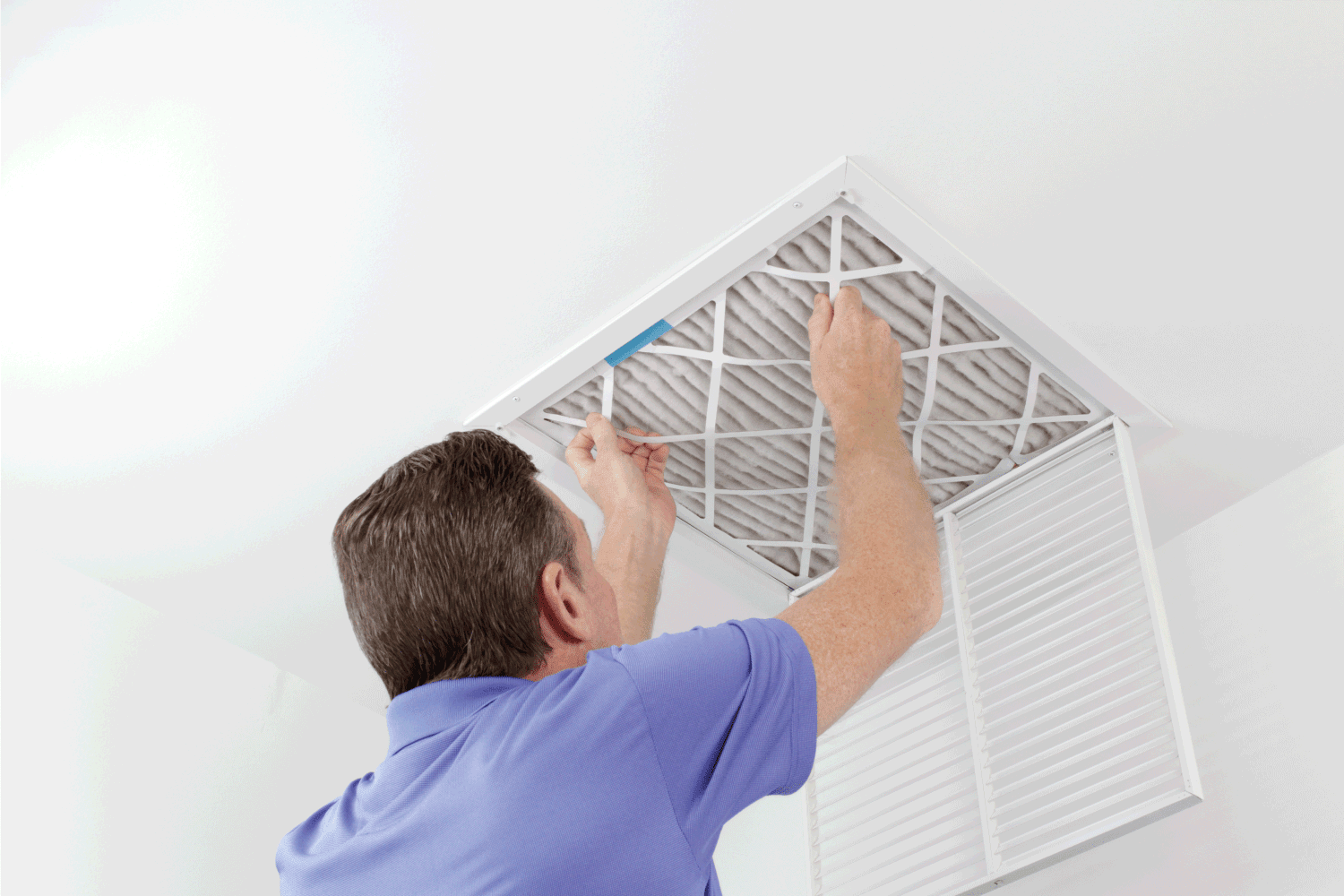It is common knowledge that you should replace air filters regularly and failure to do so often leads to damage and costly repairs in your HVAC system. Clean filters conserve energy and prolong your unit's lifespan. This cycle is already a routine task for some homeowners. Others still don't know the basics, like how many are there and where filters are located.
The general rule is one filter for each air handler. Most homes, especially large ones with multiple HVAC systems, have more than one air filter installed. These are typically placed near the furnace or your air conditioner system handler and return vents.
Now that you're familiar with the groundwork, you might as well proceed with its replacement. Continue reading this article to know how to replace your air filters and the answers to filter-related frequently asked questions.
![A person changing an air filter on a high efficiency furnace. How Many Air Filters Does A House Have [And Where Are Filters Located]](https://hvacseer.com/wp-content/uploads/2022/04/person-changing-an-air-filter-on-a-high-efficiency-furnace.-How-Many-Air-Filters-Does-A-House-Have-And-Where-Are-Filters-Located.png)
Where Are The Air Filters In Your House?
Although you can usually find air filters near the handlers and vents, sometimes you can find these elsewhere. Here are the usual spots where you can find air filters.
- Behind the ceiling vent and wall registers
- Under your floorboards or in the crawlspaces
- Every room with air return will likely have a filter behind the grill.
- The attic and the basement are common locations for air handlers; the metal housing for fans and motors.

It is best to check all those places to ensure the filter locations. If you are still in doubt and prefer to have a professional guide, you may contact your local HVAC Technician. Some even offer phone call service that gives a detailed walkthrough of finding the filters in your home.
How To Change Air Filters
The level of efficiency your system provides decreases as dust accumulates in your filter, so it is essential to change it regularly. High-end filters can last up to six months before replacement. Fiberglass filters have a monthly-based schedule. Here's how to change HVAC system air filters in your home:

In HVAC System
- Locate the filter slot; the narrow opening is usually hidden beneath the hinged flap.
- Turn off the unit; this prevents dust from getting into the HVAC system.
- Open the vent and remove the old filter.
- Insert the new filter and position it in the same orientation as the old one. Ensure the airflow arrows or markings point towards your unit.
- Put the vent back in place.
In Return Vents
- Look for a rectangular or square opening with a removable cover.
- Turn off the unit to prevent air from blowing dust.
- Remove the covering by unscrewing the bolt or pulling the tab.
- Replace the old filter with a new one, and position it in the same orientation as the old one. Ensure the airflow arrows or markings point towards your unit. For pleated filters, the side with metal should be hidden within the unit.
- Cover the vent.
How Often Should Filters Be Changed?
Asthma, skin and eye irritation, and allergic rhinitis are some of the many health problems caused by clogged air filters. If you're suddenly or frequently sick despite being at home all day with no known triggers, it must be a sign that your filters are scheduled for replacement. Moreover, your HVAC system will be giving you hints about this issue.

Strange Smells
Don't ignore odor problems since this is an obvious sign of something wrong with your house. Dirty filters often smell like something is burning. When this happens, immediately check your surroundings for open flames and short circuit wirings; if none, blocked filters are to blame.
Dusty Air
The primary function of filters is to ensure clean air circulation in your home. A clogged filter won't be able to trap dirt, resulting in dust piles up, especially around the vent area. Worst case, you'll see dust particles floating in the air during broad daylight.
White Sheet Test
Place a white sheet or cloth in front of your vents and leave it for a couple of minutes. The sheet should remain white or any shade close to it; if it turns grey, sometimes even black, then it's high time you change your filter.
Overheating Unit
Clogged filters require the system to exert more effort to maintain the standard air circulation in your home. If your unit is constantly hot to touch, check the filter despite turning it on, as this may be the cause. If the problem persists, call a technician for proper inspection and maintenance.
Dust On Filter
Regularly check the filter by taking it out every other week to see if it is still clean. If it's already grey and dust is starting to pile up, better to change it for more efficient system performance.
Can't Remember When You Last Did It
The sign speaks for itself. If you can't remember when you last changed the filter, it has probably already been a long time. There is nothing wrong with changing it earlier than the scheduled time.
There's no set schedule on when you should change filters, but common practice is every 30-90 days. However, depending on your lifestyle, the need to do so may vary. For example, if you have a pet or a smoker, the frequency would increase. The best way to tell if the filter is due for replacement is to check it and your system's state regularly.

What Are The Different Types Of Filters
When choosing the type of filter to use, you'll need to consider two factors: purifying need and cost. There are various options available on the market that can cater to your budget and requirements. Here are the seven kinds that homeowners use in their system:
Washable Filter
This filter is a great way to cut down on expenses. Although it's pretty pricey, you'll still be saving money in the long run since this can last for many years.
Check out this Washable Filter on Amazon!
UV Filters
This type utilizes ultraviolet lights to kill bacteria and viruses, including mold spores. It effectively eliminates health-hazardous microorganisms but not so much in filtering out pollutants like dust.
Media Filters
The media filter has a high MERV rating that competes with the filtrating system of an expensive high-MERV filter. This filter is excellent in trapping dirt as it seals it in, thus preventing it from being released into circulation.
Check out this Media Filter on Amazon!
Pleated Filters
You can use reusable or disposable pleated filters, which offer a great filtering system due to their pleats that can trap small pollutants such as pet danders and mold spores. It also reduces HVAC noise while improving indoor air quality.
Check out this Pleated Filter on Amazon!
Electrostatic Filters
Electrostatic filters clear out the air by creating static which acts as magnets adhering dust and pollutants to the sheet. Its pull is strong enough to keep it from escaping the filter and being released into the air.
Check out this Electrostatic Filter on Amazon!
High-Efficiency Particle Air/ HEPA Filters
It provides the highest level of protection since it can remove 99.97% of airborne pollutants. It is also the filter recommended by the Department of Health as it filters out even the smallest particles like bacteria.
Spun Glass Filters
However, the most common type of filter is not popular with homeowners due to its low filtering quality. It is not recommended for people with respiratory problems as it can only clear a small portion of dust and allergens.
Comparison of Air Filters
Washable, Electrostatic, HEPA, and Spun filters are the top choices in terms of cost-effectivity since they only require replacement every few years. The washable filter also boasts its eco-friendly characteristic and longer life span as this can be reused.
Spun, on the other hand, offers the lowest price. The most important consideration is improved air quality, this is the main goal of filters. UV is favored due to its ability to kill mold and germs, thus preventing respiratory illnesses.
Selective filtering is one of the major con of most filters like HEPA, Spun, Media, Washable, and Electrostatic since the first three can't filter out odors and fumes while the latter two doesn't guarantee mold and mildew blocking. Media is also quite costly both in maintenance and price, same goes with Pleated and UV.
Now that we have laid out the various types of filters and their pros and cons, you can already pick which one suits your system the best. We still recommend consulting with HVAC experts to verify compatibility and their advice.
![Man replacing A/C filter for a home air conditioning system. How Many Air Filters Does A House Have [And Where Are Filters Located]](https://hvacseer.com/wp-content/uploads/2022/04/Man-replacing-AC-filter-for-a-home-air-conditioning-system.-How-Many-Air-Filters-Does-A-House-Have-And-Where-Are-Filters-Located.png)
Conclusion
Air filters are vital in maintaining a comfortable home. We often overlook air filters, but they are another line of defense that protects us from illness-causing particles and ensures structurally sound houses.
Changing it is the easiest way to prevent issues from occurring; you can do this yourself or hire a professional. Either way, make it a habit to inspect your filter and whole HVAC system for consistent optimal results.
If this topic helped you with your air filter-related questions, we have a few more topics worth the read!




